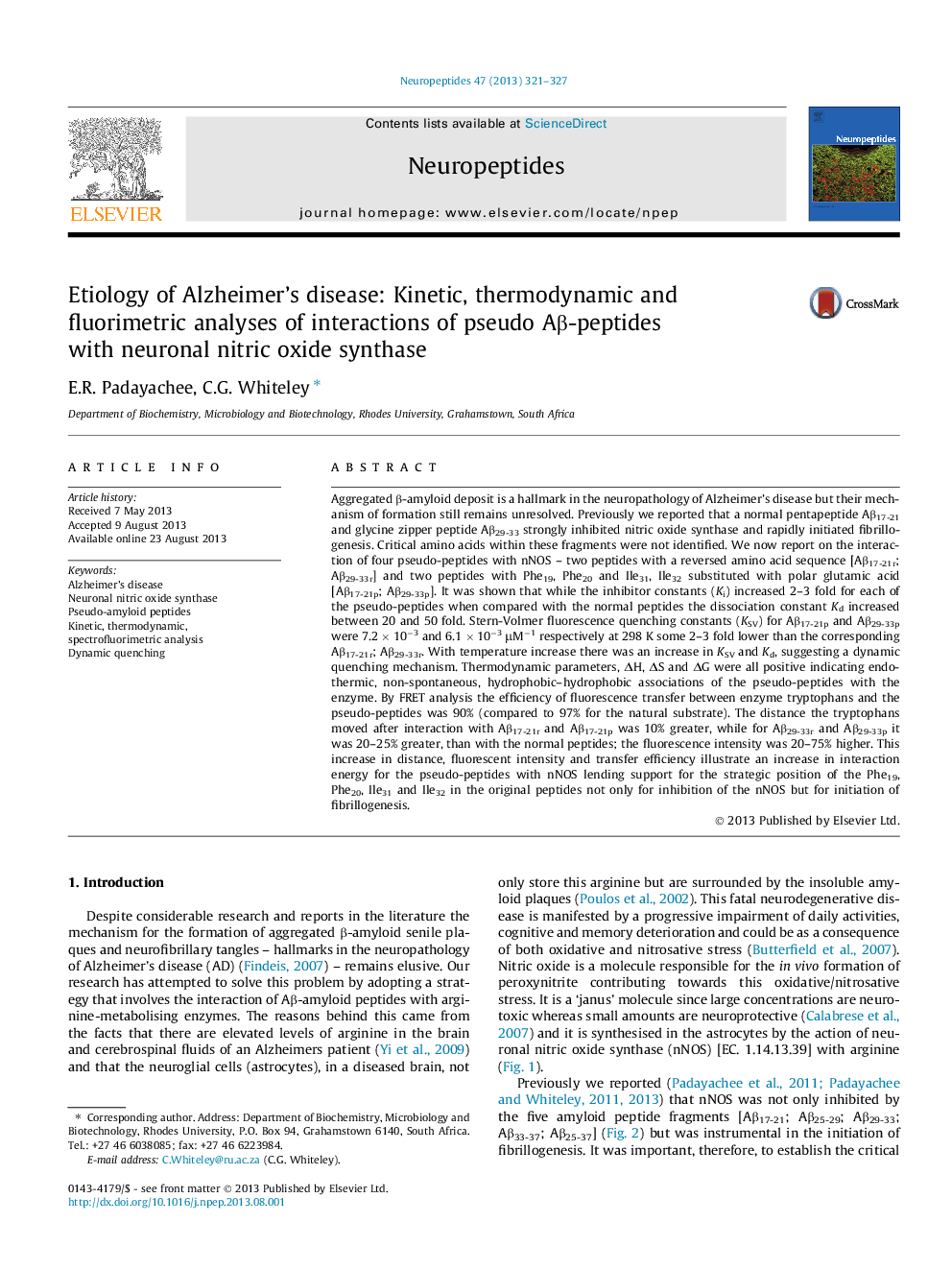| Article ID | Journal | Published Year | Pages | File Type |
|---|---|---|---|---|
| 2808091 | Neuropeptides | 2013 | 7 Pages |
Aggregated β-amyloid deposit is a hallmark in the neuropathology of Alzheimer’s disease but their mechanism of formation still remains unresolved. Previously we reported that a normal pentapeptide Aβ17-21 and glycine zipper peptide Aβ29-33 strongly inhibited nitric oxide synthase and rapidly initiated fibrillogenesis. Critical amino acids within these fragments were not identified. We now report on the interaction of four pseudo-peptides with nNOS – two peptides with a reversed amino acid sequence [Aβ17-21r; Aβ29-33r] and two peptides with Phe19, Phe20 and Ile31, Ile32 substituted with polar glutamic acid [Aβ17-21p; Aβ29-33p]. It was shown that while the inhibitor constants (Ki) increased 2–3 fold for each of the pseudo-peptides when compared with the normal peptides the dissociation constant Kd increased between 20 and 50 fold. Stern-Volmer fluorescence quenching constants (KSV) for Aβ17-21p and Aβ29-33p were 7.2 × 10−3 and 6.1 × 10−3 μM−1 respectively at 298 K some 2–3 fold lower than the corresponding Aβ17-21r; Aβ29-33r. With temperature increase there was an increase in KSV and Kd, suggesting a dynamic quenching mechanism. Thermodynamic parameters, ΔH, ΔS and ΔG were all positive indicating endothermic, non-spontaneous, hydrophobic–hydrophobic associations of the pseudo-peptides with the enzyme. By FRET analysis the efficiency of fluorescence transfer between enzyme tryptophans and the pseudo-peptides was 90% (compared to 97% for the natural substrate). The distance the tryptophans moved after interaction with Aβ17-21r and Aβ17-21p was 10% greater, while for Aβ29-33r and Aβ29-33p it was 20–25% greater, than with the normal peptides; the fluorescence intensity was 20–75% higher. This increase in distance, fluorescent intensity and transfer efficiency illustrate an increase in interaction energy for the pseudo-peptides with nNOS lending support for the strategic position of the Phe19, Phe20, Ile31 and Ile32 in the original peptides not only for inhibition of the nNOS but for initiation of fibrillogenesis.
